
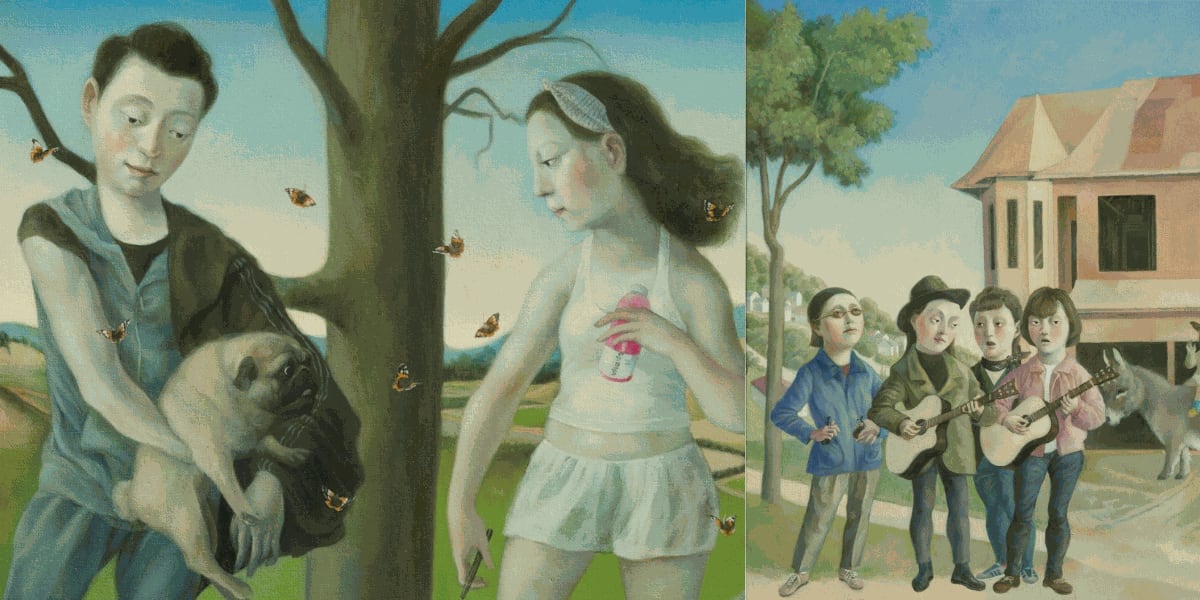
Kim distinguishes herself as the dynamic and vibrant spirit. Expertly declined across a combination of playful and populated scenarios, the artist bestows sacredness with the ‘Still Image’ effect.
Her works have a profound impact on the viewer, evoking a sense of precarious absurdity as one navigates through the complex and layered landscape of the mind. The passage that her works open onto is one that leads to the abyss of the mind, a place where time seems to lose its meaning and instead gives way to a sole momentum of tension and flow. This elusive present that her works embody is one in which reason and imagination come together in a harmonious dance, like opposite twins united in a shared purpose. The viewer is invited to become fully immersed in this world, to lose themselves in the depth and complexity of the artist's vision and to discover new insights and perspectives.
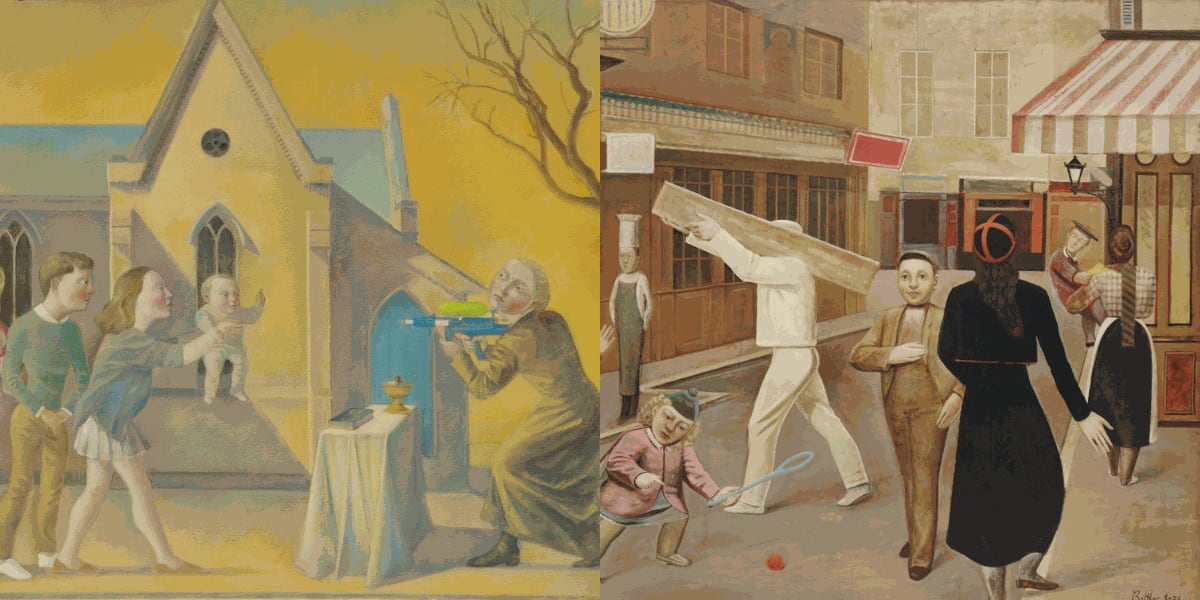
Eunshin Kim's artworks are characterized by the intricate interweaving of the faces of the protagonists with masks, creating a densely populated mise en scene that blurs the boundaries between the real and the fantastical. The tension in her scenarios is both dramatic and ironic, as she masterfully blends elements of different artistic traditions to create something entirely new and original. The viewer can see the influence of Dynamic Cranach-like landscapes, as well as dramatic scenarios reminiscent of Masaccio's Adoration, all reset within the mood of Pierre Bonnard's evenings in Paris, and all frozen in time by the Still Image effect borrowed from Balthus.
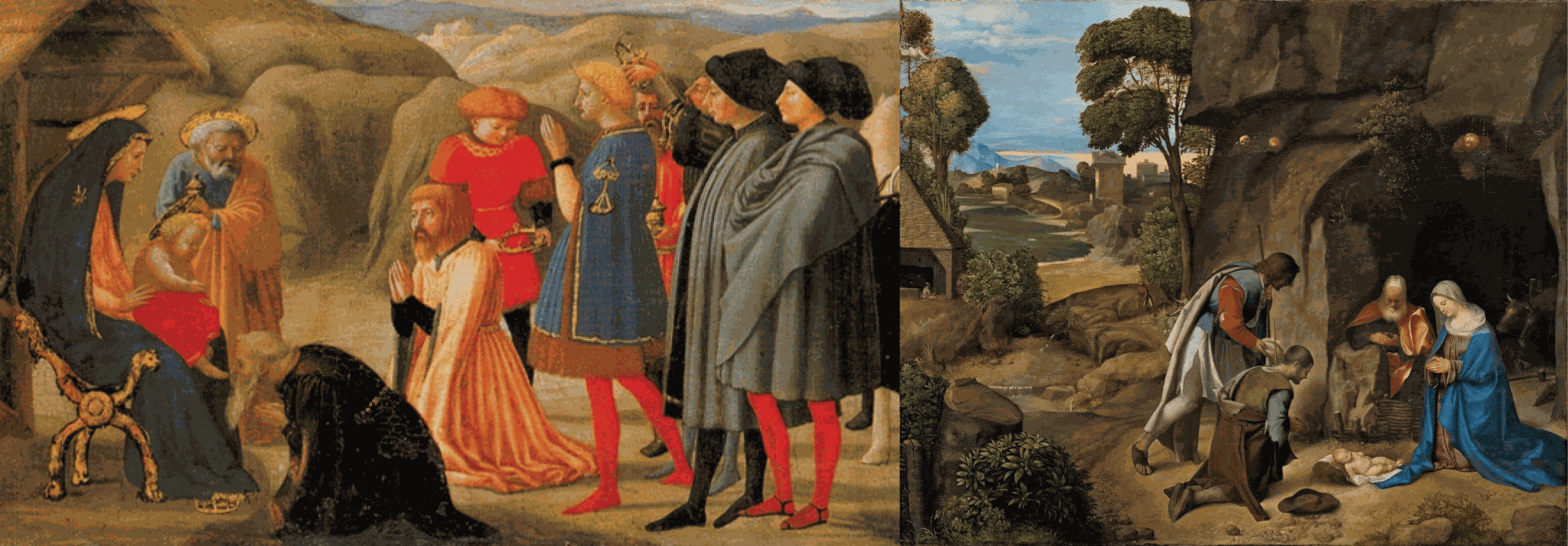
This eclectic mix of inspiration gives birth to Eunshim Kim's visually striking compositions, which are characterized by a sense of depth and dimensionality that draws the viewer into the narrative. The artist uses perspective and spatial relationships to create an immersive experience that is not only visually striking, but also emotionally resonant. The viewer is invited to become fully immersed in the world of the artwork, to explore the hidden depths of the artist's vision and to discover new insights and perspectives. The artist's work is not only a visual experience, but also a daily search for happiness and the meaning of life.
The desire to act, and the previous instance, consume the pursuit of maintaining a happy balance. All this, almost recalling the moment in which Eve's hand reaches down to reach the forbidden fruit, in denial of a possible happiness once the knowledge of good and evil has been internalized.
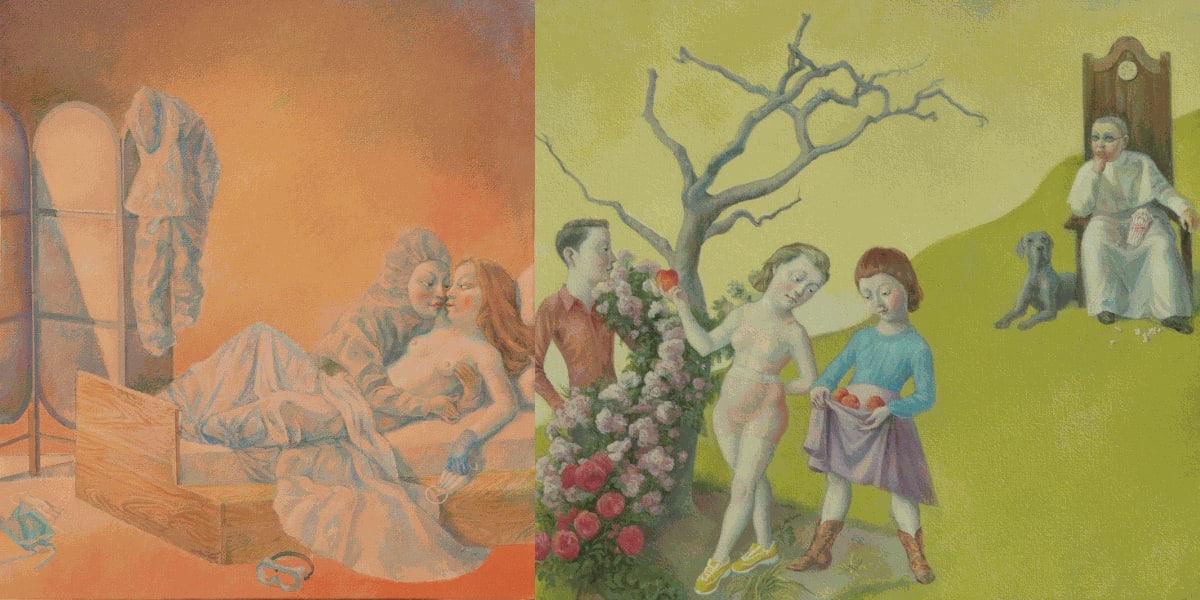
The Artist is able to capture the diversity of movement in her scenes, freezing them at the apex of the action and returning the profound contrast between the noisy buzz of reality and the silence of the canvas space.
Parallel to the atmosphere of the famous ‘Fountain of Youth’ by Lucas Cranach The Elder. The artist brings out from her paintings a perceptible and dynamic tension that is possible to admire in the ‘Moving out II’ and ‘Half Time’, which directly reports the great German artist’s scenarios.
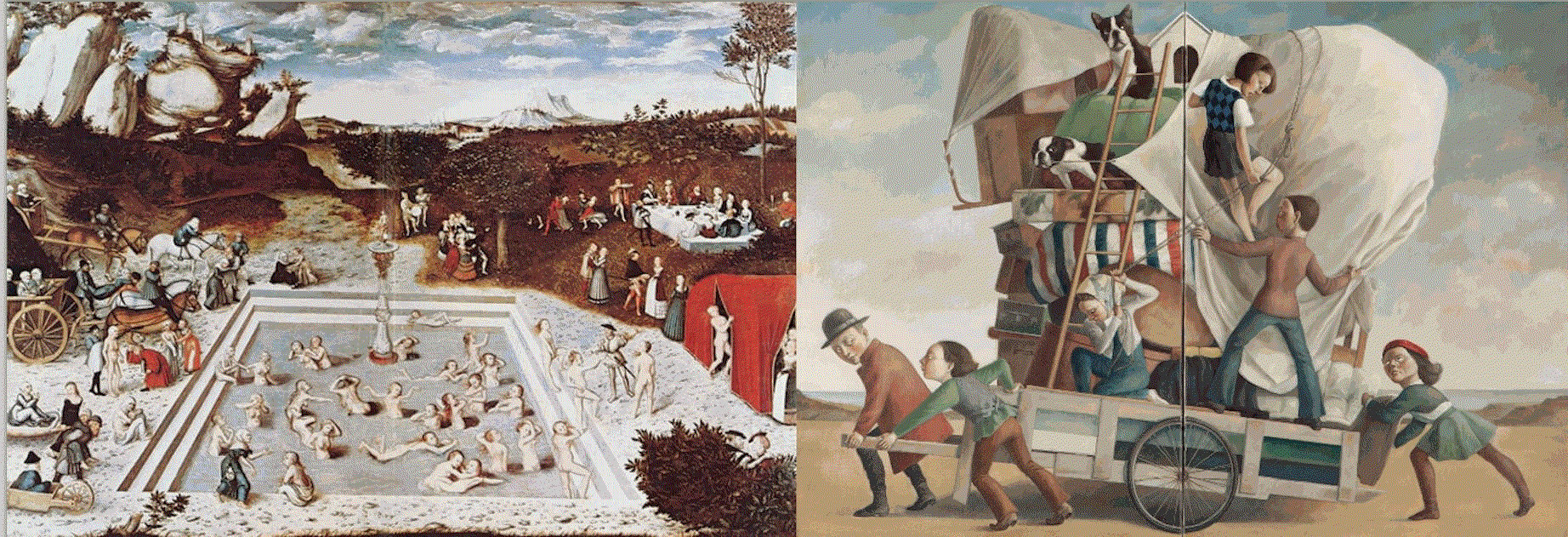
The direct parallelism with the masterpieces, ‘Primitive People’, and ‘Old Man Beguiled’ by Courtesans, also expressed in a strong plastic force through the physicality and sinuosity of the characters’ bodies and ambiguous expressions.

Polish genius Balthus also influences Grace Eunhsin Kim’s work, as noticed in ‘Half Time’s tension and coloured pallet. Furthermore, by observing ‘A boy and a Girl’, the same pose and inscrutable expression is found in ‘The King of Cats’ by Balthus.
In Kim’s artwork ‘Wrestle’ there is a presence of the same plasticity observed through Balthus’s work ‘Children’.
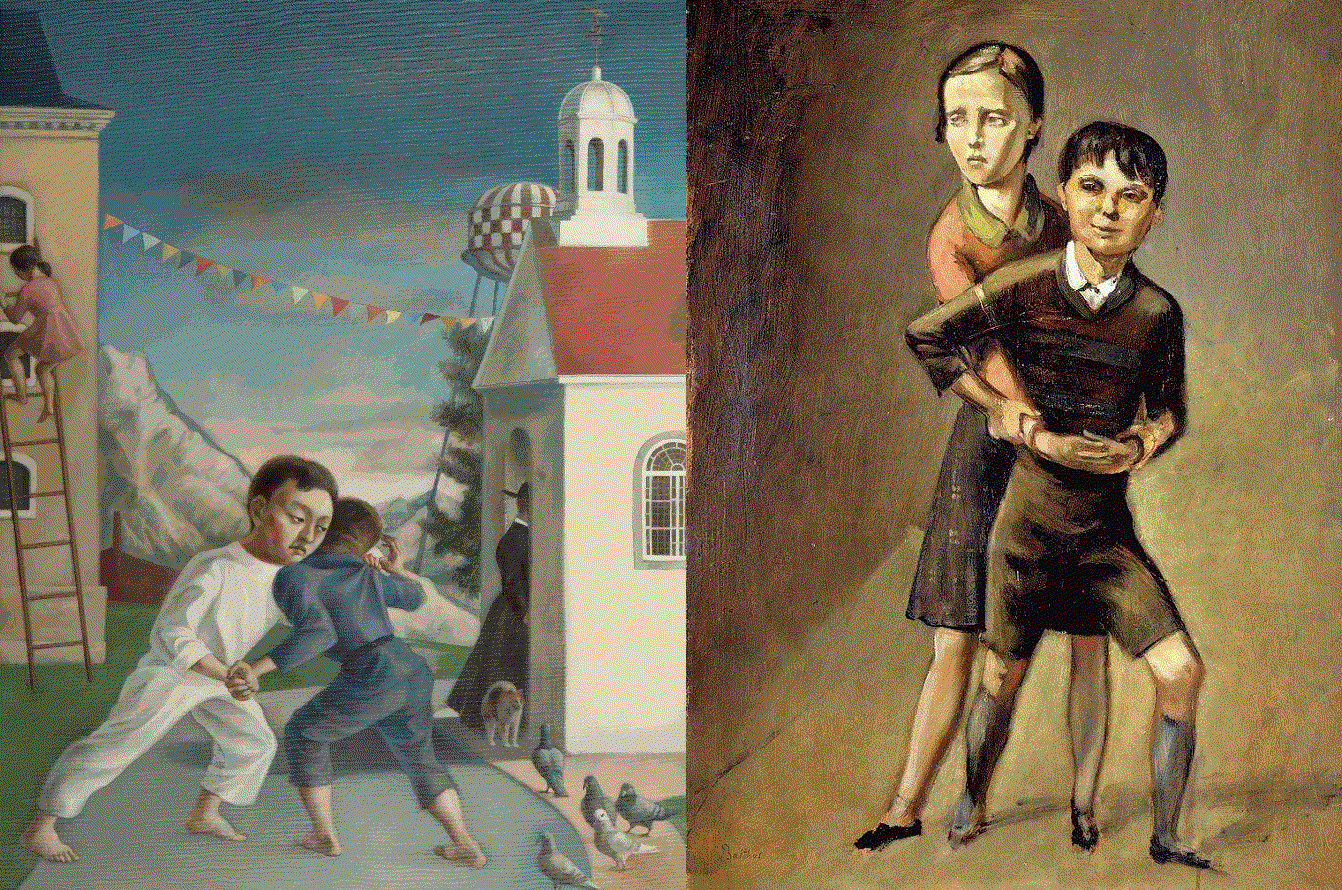
All together resulting in a constant but subtle tribute, greatly executed to the uniqueness of Grace’s detailing, who doesn’t miss any chance to pervade every canvas of her Asian heritage.
It is even possible to deduce the kaleidoscopic sentimental representation of ‘Celebration II’. The adoration of the Magi is represented across the surrealism of her characters which, far from discrediting the spirituality of the occasion, celebrates the greatest influences of a mocking Magritte.

In her new body of work titled "The Meeting," presented in a double solo exhibition with Jeffrey Chong Wang, Grace allows us to peek through the windows that open onto the everyday nuances of love while she explores both hers and her partner’s visions of the sentimental relationship that characterizes the story of these two artists in life and work.
Grace Eunshin's art is marked by a parallelism between ancient and contemporary visual language, where she masterfully mixes symbolism, deftly weaving together a narrative of love and pursuit. She uses traditional imagery such as religious iconography, mythology, and symbolism to create a sense of continuity with the past, but at the same time, her art is not simply a nostalgic tribute to the past. Instead, it serves to give back a sense of the sacred in our modern-day lives, depicting moments of contemporary existence rather than mystic scenes.
In Grace Eunshin's artwork, consumerist labels such as iPhones, Nike trainers, and popular drinks are prominently featured throughout her compositions. These symbols of consumerism serve as a replacement for the traditional symbol of the apple, which has been used throughout art history to convey ideas about morality, temptation, and the human condition. The apple, which is often associated with religious and mythological significance, is traditionally seen as a symbol of the sacred. However, in Eunshin's art, consumerist labels are used to represent the desacralized, the mundane, and the profane.
The contrast between these symbols of consumerism and the traditional symbol of the apple reflects on the eternal versus the fleeting.

Eunshin's art is a commentary on the human experience and society, inviting the viewer to contemplate the cyclical nature of life and the eternal pursuit of love, connection and possession. Her use of symbolism and imagery is a fresh and fluid take on contemporary art that communicates deep truths about the human experience in a relatable way.

